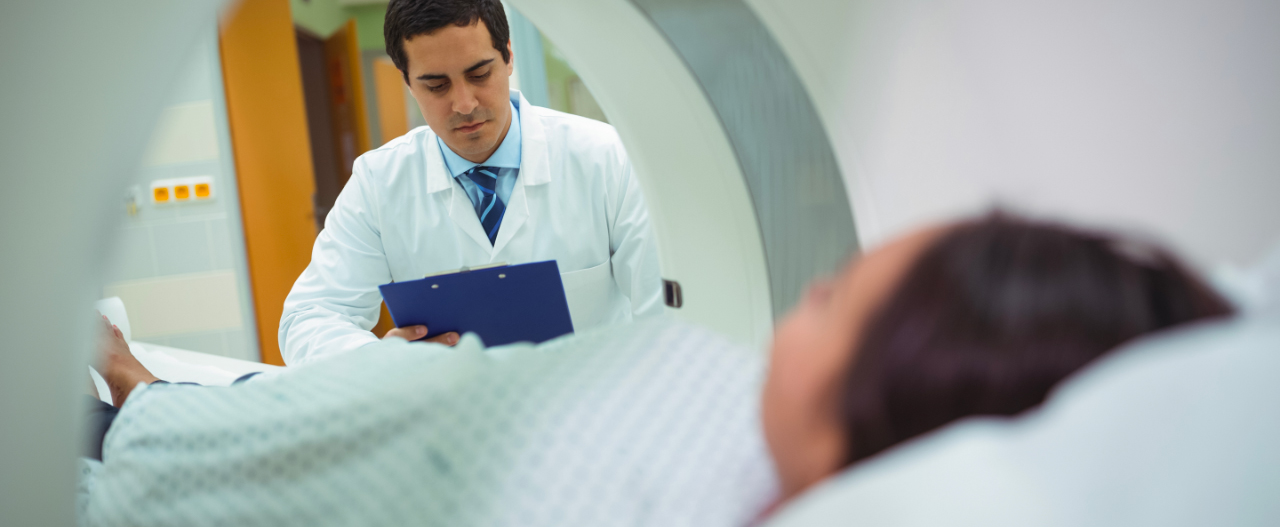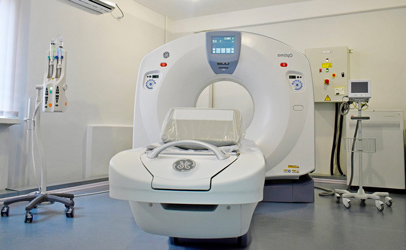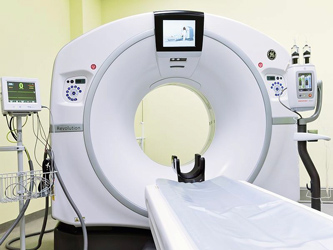
CT-Scan
Types of examinations
| Examination | Note |
|---|---|
| Neuro-imaging | Skull, Hypophysis , Rachis |
| ENT | Face, orbits, ear, tympanic bone, cavum, sinus, larynx |
| Thorax/Visceral/Pelvis | Thorax, Thorax Abdominal, Thorax Abdominal Pelvic, Abdomen, Pelvis, CT enteroclysis |
| Urology Imaging | Urinary CT scan, Urology CT scan |
| Osteoarticular | Femur, Knee, Elbow, Arm, Forearm, Hand, Maxillary, Pelvis, Hip, knee CT arthrography, shoulder CT arthrography |
| Vascular | Arteriography of limbs, Arteriography of supra-aortic branches |
Contra-indications
There are no contraindications to CT scan without injection of iodinated contrast medium. In case of allergy to iodine or renal insufficiency, the essential intravenous injection of contrast medium is formally contraindicated.In case of pregnancy, examination of the pelvis is contraindicated until the 5th month except absolute urgency. For any examination of another area of the body, a leaded protection is placed on the area of the pelvis. Asthma or other allergies are not contraindications.
Preparation
It is not required to fast for a CT scan. No preparation is indicated.In sedation is needed, a fast of 4 hours is required.
Precautions
It is important to inform the operator about:
- An allergy to iodine
- Medicines you take
- Any surgery that you would have undergone
In case of injection of contrast medium, a renal assessment (creatinemia, creatinine clearance) will be required for patients over 60 years, hypertensive and diabetic patients Diabetics on Metformin (Glucophage, etc.) will have to suspend their treatment before and during the 48h following the examination.
All the above-mentioned patients should drink 2 liters of water within two hours of a CT scan.
In the case of concomitant prescription of a CT scan and a scintigraphy, the latter should be performed first except in the case of a thyroid CT scan.
In case of allergy to iodine, the CT scan can be performed without contrast medium injection or replaced by MRI.
Procedure of the examination
After an interview aiming to specify the reasons for the examination and to eliminate possible contraindications, the patient benefits from a preparation adapted to the required type of examination (ingestion of water, filling of the colon, placement of an intravenous catheter, etc.).
The operator asks then the patients to lie on the bed of the scanner and to follow his instructions: not to move and to stop breathing on demand.
The examination bed moves during the emission of X-rays. This move can be done several times.
If necessary, an iodinated contrast medium will be injected by means of an automatic injector: it causes a feeling of intense but brief heat and a metallic taste in the mouth.
The duration of the exam exceeds rarely 5 minutes.
Equipment
Type:CIMA has two Scanners:
Revolution EVO 64 cuts / OPTIMA 660 64 cutsSupplier :General Electric


Technology
An X-ray or a CT scanner is a slicing imaging device that combines a permanently rotating ring supporting an X-ray tube and a detection ramp linked to a powerful computer system. The patient would be lying on a tray moving inside the ring during an X-ray emission. Each rotation generates a slice that is then divided into small volumes or voxels whose positions and density level measurements will be determined by the computer system. Depending on its level, the density will be translated into a color ranging from white to black (black for the lowest and white for the highest). The juxtaposition of all these voxels will produce an image. Images could be combined to obtain 2D and 3D views. A radiologist who would make a diagnosis by analyzing the images.
What is the benefit of using a CT scan ?
It is a fundamental tool for patient care. A majority of pathologies could be detected or analyzed thanks to a CT scan.
Opening hours
Saturday - Thursday
07:00 - 19:00